
A symbol of vibrant democracy for some while a source of persecution for others, parliament buildings are always exceptional and monumental regardless of the regime and governing system they represent. Unlike other types of public buildings, a parliament house must serve as a national showcase and at the same time designed to be a tightly secured facility keeping any threats out, making it a modern-day fortress. The next 7 parliament buildings are considered unique even amongst epic and grandiose edifices of their kind.
Excluding a handful of micro-states, Bangladesh is the most densely populated country in the word with a staggering 1,174 people per square kilometer, culminating in its over populated capital city of Dhaka, a hectic melting-pot known for its vibrant street life, unrestrained chaos and the prevalence of informal housing.
It might come as a surprise, but this frenzy metropolis is also home to one of the world’s most renowned 20th century architectural wonders, the national assembly of Bangladesh, locally known as Jatiya Sangsad Bhaban, designed by the late world-class architect, Louis Kahn.
Completed after two decades of intermittent construction, the parliament house is a rare example of modernist building which incorporates traditional motifs into its architectural design instead of typically ignoring them.
The main parliament complex consists of the 8 different blocks, each one is unique by its own rights, surrounding the national assembly hall, merging together into a solid entity, featuring a multi-side façade, pierced with abstract geometrical shapes, inspired by Bengali cultural heritage while also providing light wells for the building’s interior. Additionally, the parliament house is immersed in a moat-like artificial lake, a gesture to Bangladeshi riverine life and landscape.
Contrasting the parliament’s massive concrete structure and its monolithic appearance are orthogonal inlaid stripes of marble, all locally made and mined as part of Louis Kahn’s philosophy of using local available building materials, merging both international and local Bengali cultural facets, making it a successful and inspirational masterpiece in the eyes of many architecture enthusiasts worldwide.
Fortunately, visiting the national assembly building is possible, for more details regarding requirements and admission fee please check the official website.
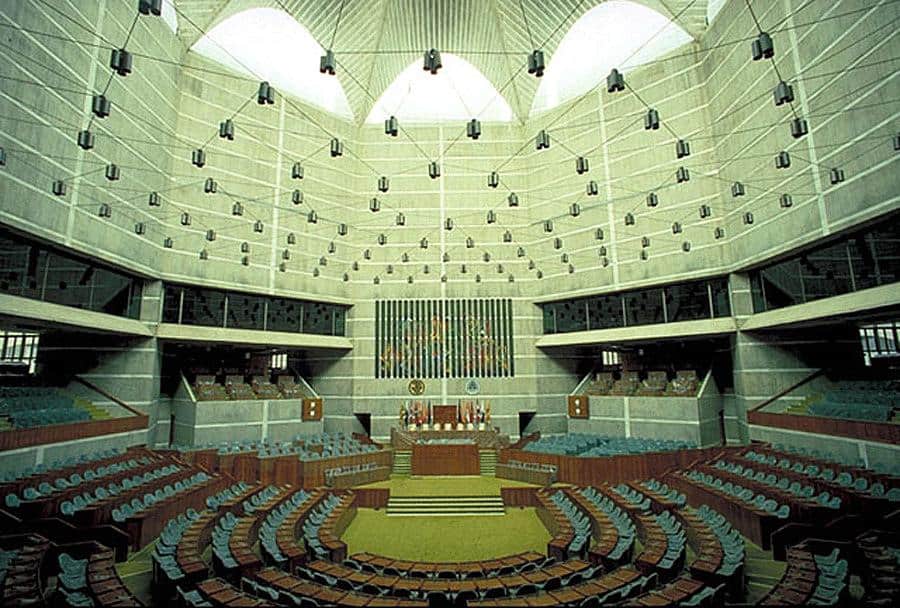
The interior of Bangladesh National Assembly
photography by: amiraram
The former Portuguese colony of Angola gained its independence in 1975, after decades of civil war the country is currently in the midst of a recovering process from its bloody past, driven by its exceptionally high GDP growth and the ensuing rapid construction of infrastructure mega-projects. As part of its booming present, a brand new parliament building was inaugurated in the capital city of Luanda at 2015, making it the largest building ever to be constructed in post-independence Angola. Erected by a Portuguese construction company, the building itself is linked directly to the country’s colonial legacy by the countless architectural references of Portuguese architecture, featuring a massive 21 meters diameter and 57 meters high dome, serving as a landmark for the entire nation to awe at.

Angola National Assembly in Luanda
photography by: David Stanley
Functions as a modern day oasis, Kuwait-city is one of numerous coastal cities in the Persian Gulf to have completely transformed during the last decades. Among the contemporary glass towers and vast network of highways, few buildings stand out, one of which is for no doubt the Kuwaiti Parliament, also known as the National Assembly.
The building was designed in 1972 by the world renowned Danish architect Jørn Utzon who previously planned the Sydney Opera House, conflating several architectural motifs from the local Arab culture such as the Bedouin tent, articulated by a colonnade of poles supporting a curved concrete canopy, with a typical modernist orthogonal scheme and construction method.
All offices are arranged around an internal courtyard and connected by a grid of hallways, inspired by a middle-eastern Bazaar, a concept born by the architect’s previous visit to Iran.
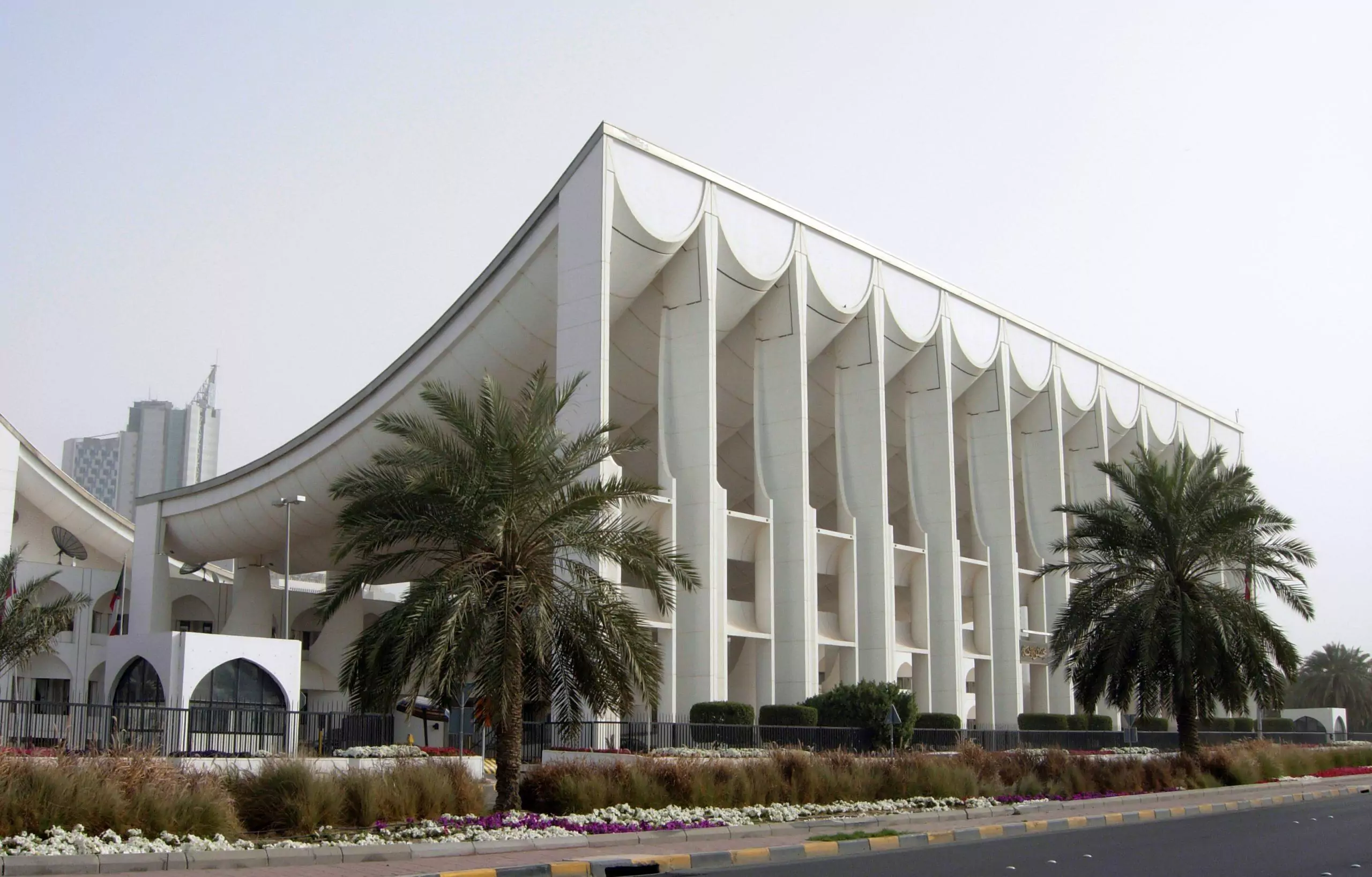
Kuwait National Assembly in Kuwait city
photography by: xiquinhosilva
Kiribati is an atoll-island nation in the south Pacific, isolated by the vastness of the ocean, making it one of the least visited countries on earth, furthermore, the country’s average altitude of merely around 3-4 meters makes it extremely vulnerable to the effects of climate change.
Tarawa, the most populated atoll in the Kiribatian archipelago, is also home to the country’s capital and governmental branches. Encircled by low rise and basic housing at one side while facing the ocean on the other side, Kiribati house of assembly is a prominent structure in Tarawa, acting as unicorn who outshines everything around it.
Built by a Japanese construction firm, the building’s design is inspired by a traditional Maneaba, a traditional meeting place which is found at the heart of every village across the nation, typically consisting of coral-stone slabs, supporting a giant roof made of coconut trees, subsequently branding the parliament as the National Maneaba.
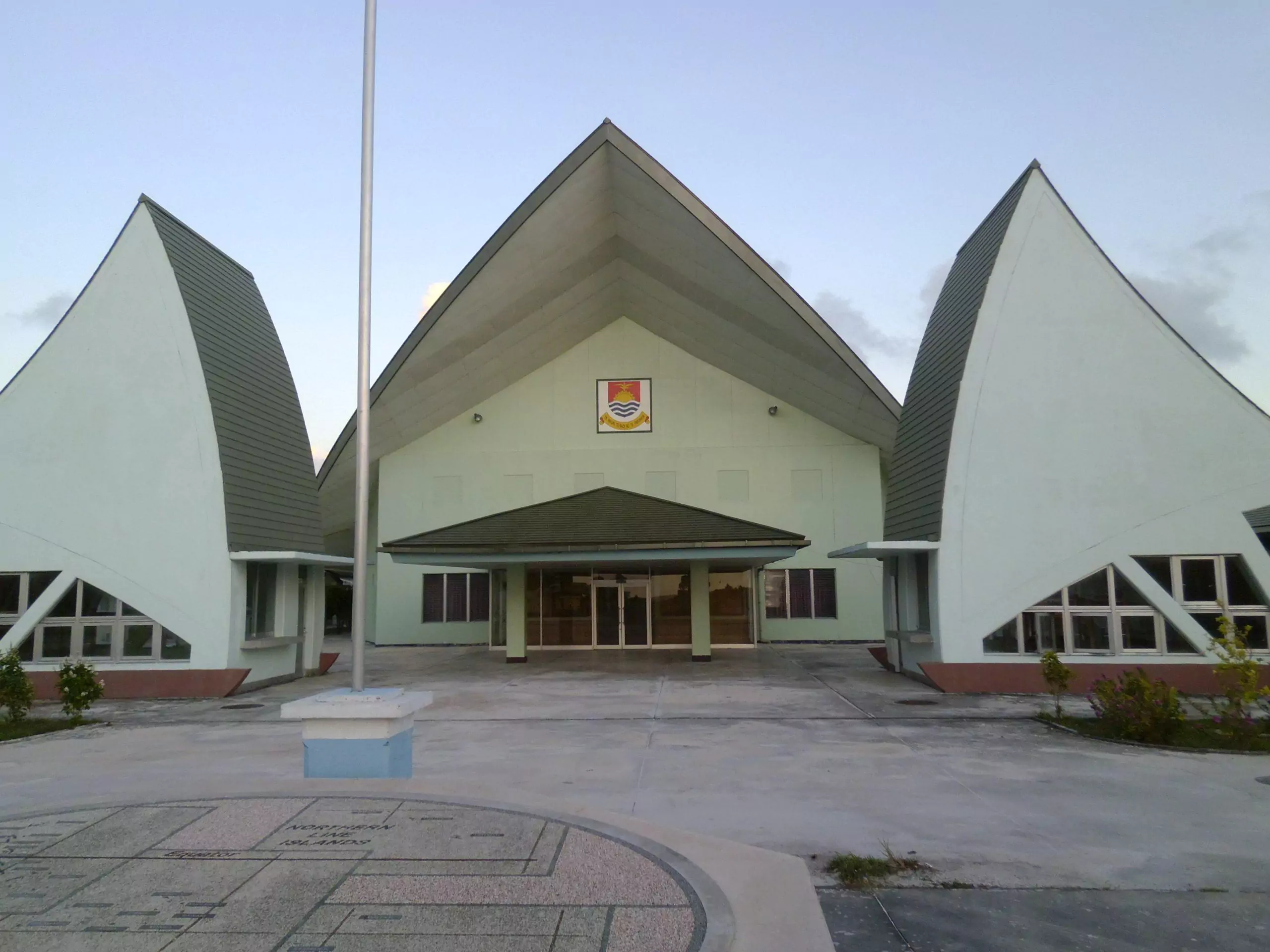
Kiribati house of assembly in Tarawa
photography by: lirneasia
Throughout its entire history, the small Mediterranean island-nation of Malta served as a crossroad of empires and a cultural bridge between Europe, North Africa and the Middle East.
Despite its modest size, Malta is surprisingly densely packed with dozens of historic sites, walled towns and monuments, making it a top tourist destination among Europeans.
As part of Valletta city gate project which attempted to transform the capital city main entrance into a more appealing public space, a brand new Parliament building was constructed. The new Parliament house, planned by the world renowned architect Renzo Piano, aimed at linking Malta’s architectural legacy to a more relevant present by incorporating the local building materials into a modern design. Interestingly, the main façade has a pixelated map of Malta carved out of slabs, inspired by the coastal eroded stone, widespread in many Maltese-Baroque style buildings, of which ironically the former Parliament house is amongst.
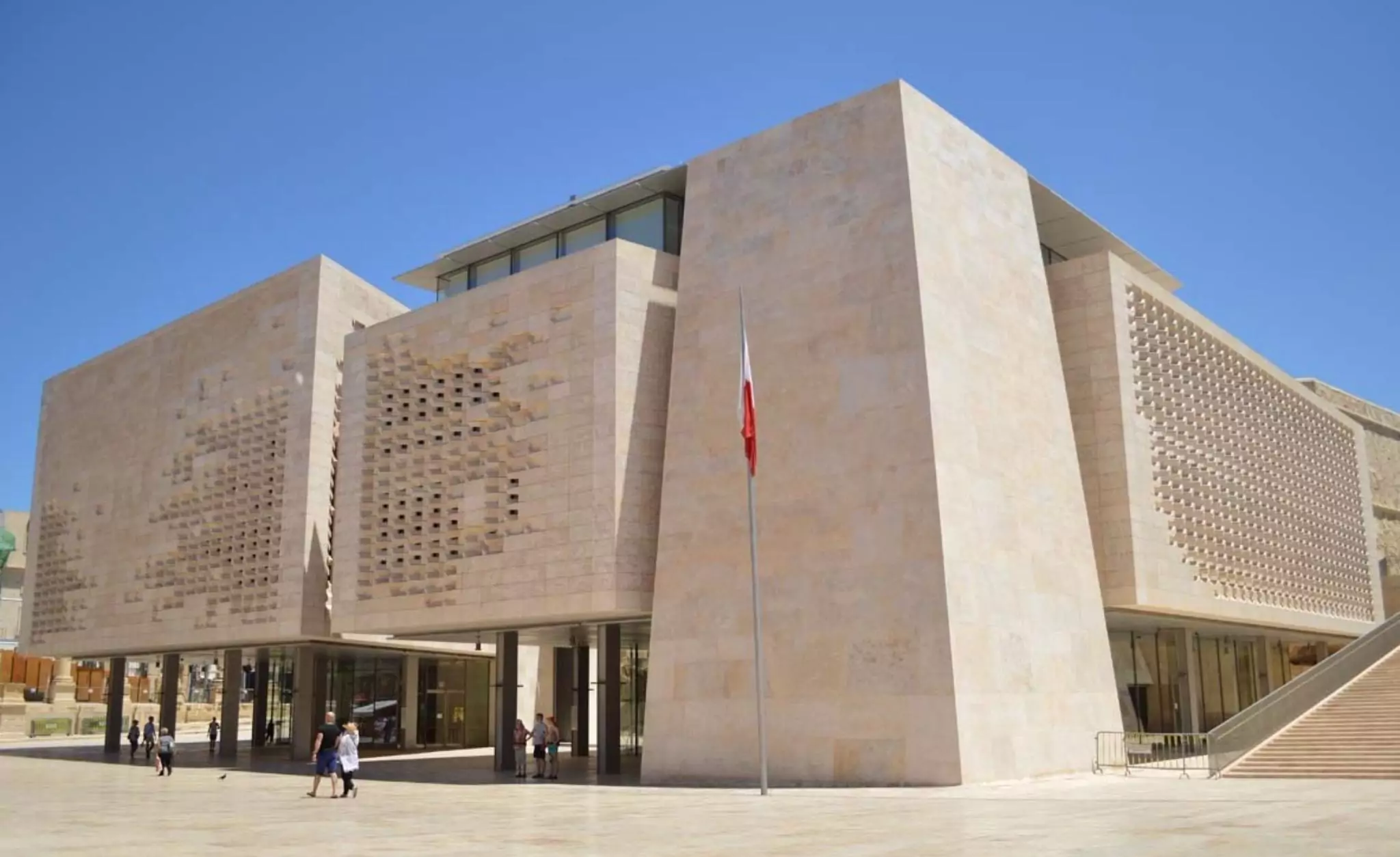
Malta Parliament house in Valletta
photography by: Continentaleurope
The Caribbean nation and former British colony of Trinidad and Tobago is the southernmost country in the Lesser Antilles, comprised of two main islands bearing its name and additional 21 smaller islands, of which, Trinidad is by far the largest of all, serving as the national economic heart, home to the country’s capital city and its largest urban center, Port of Spain.
The city of Port of Spain is blessed with many architectural marvels, remnants of the former colonial rule, yet, outshining them all is Trinidad and Tobago Parliament, also known as the Red House.
The current red painted edifice on Woodford Square is the building’s second reincarnation after being blazed by an angry mob during the water riots of 1903, following the increase of water rates by the British governor. Ironically, even the present-day parliament building had its fair share of incidents, when in 1990 an armed man infiltrated the house of representative, taking hostage of the prime-minister and several other ministers, leaving many new bullet scars on its walls.
Fully renovated again in 2020, the Red House with its turbulent past is perhaps one of the most majestic buildings of historical significance in the Caribbean, flamboyantly showcasing its pinkish-reddish walls while brimming with adorable Beaux-Arts style ornaments to behold at.
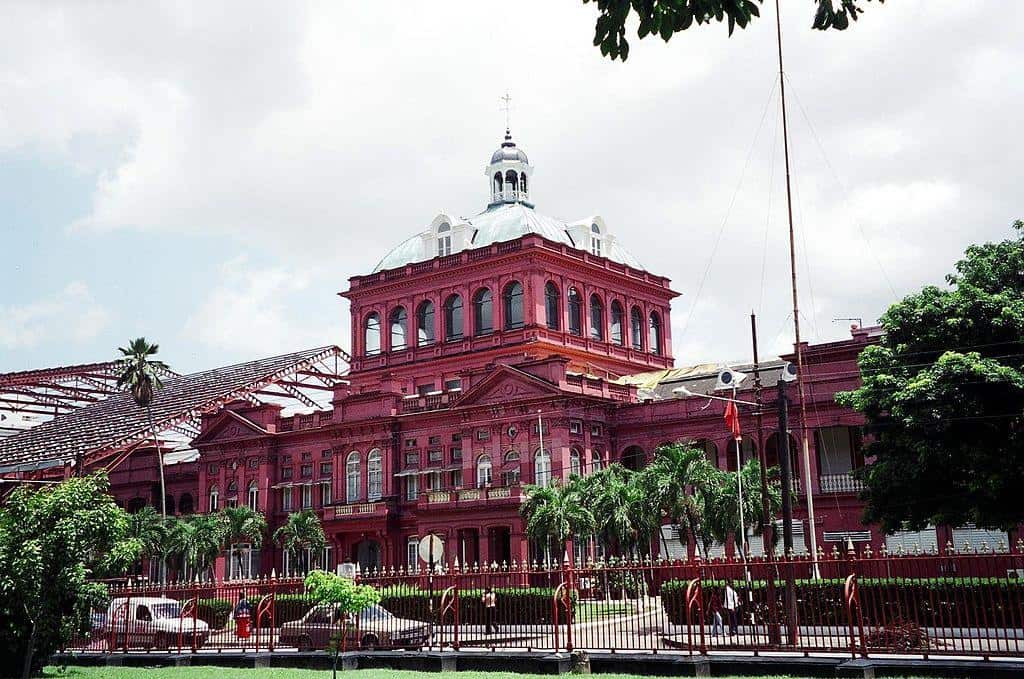
The Red House, home to Trinidad and Tobago’s Parliament
photography by: Anthony Mendenhall
Most parliaments around the world are divided into two distinct categories, modern-style buildings free of any ornaments or ethnic architectural context while the second type are parliaments that showcase what is often perceived as pure local architecture, figuratively representing national traditions.
The national assembly of Cambodia overwhelmingly belongs to the latter group, as many foreign passersby might mistake this governmental building with a Buddhist temple, thanks to its embellished façade, featuring traditional ornaments and structural elements synonymous with Khmer architecture.
Completed in 2007, the national assembly building epitomizes the transition between Cambodia’s communist past, fully contradictory of any cultural references of national significance, to the revival of the monarchy and the ensuing democratic process, so gracefully reflected in the building’s attempt to authentically represent the people. The design itself takes inspiration from the lost city of Long-Vek which served as the national capital during the Post-Angkor Period, attempting to directly link between that era to modern times.

Cambodia National Assembly in Phnom-Penh
photography by: Sorn Seang Heng